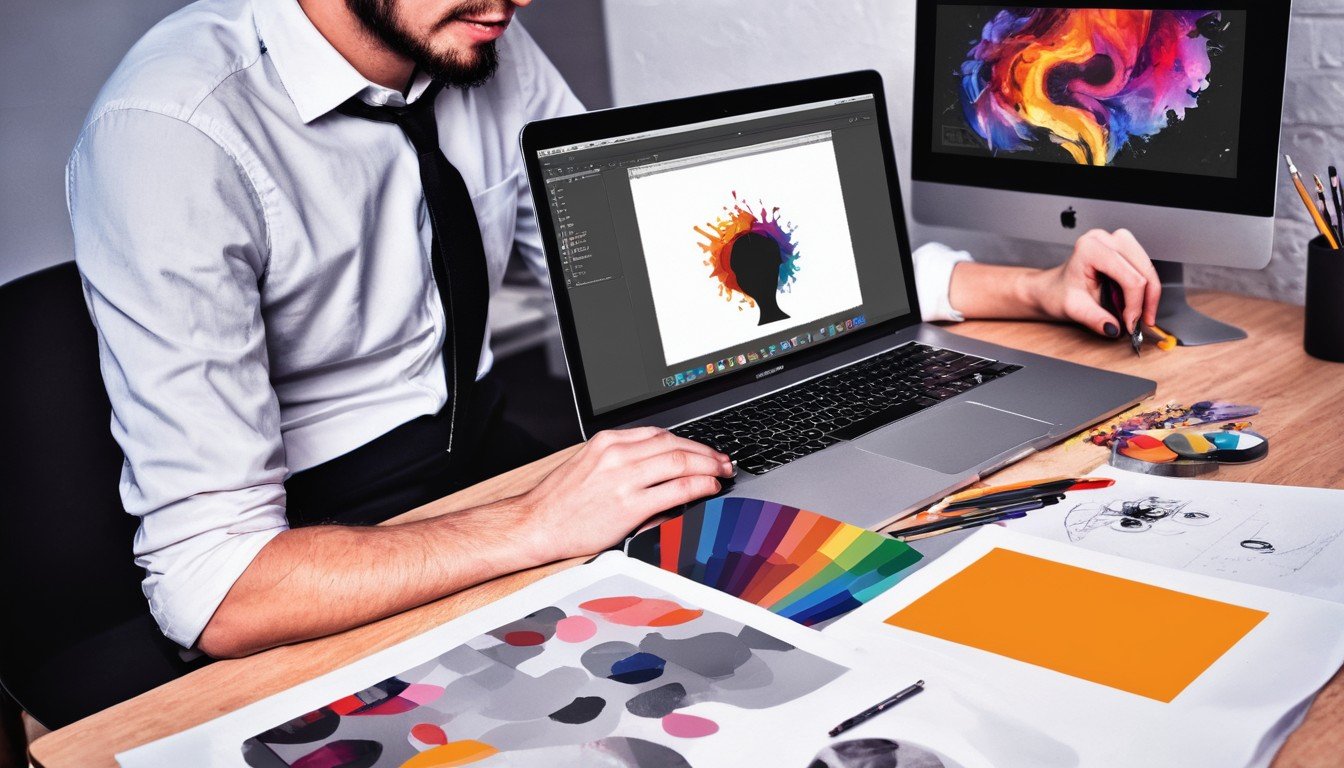#Career Guidance, #UI UX Beginner Guide, #UX design & UI Design
Bridging the Gap: Transition from Graphic Designer to UX Design
UX Design - Mentor & Author.
7 Feb, 2024

Every graphic designer carries a deep emotional connection to their work, creating designs that reflect their identity. However, this emotional tie can be a double-edged sword. As the subjective nature of graphic design can lead to unappreciated efforts and heartbreak. It’s this very struggle that prompts many graphic designers to make the shift to UX design. So, if you are one of them, you are in the right place. In this article how to make the switch from graphic design to UX design. Without any further ado, let’s get started.

Key Differences Between Graphic and UX Design:
Graphic design and UX design, while related, serve distinct purposes. Graphic design focuses on creating visually appealing and communicative elements. Whereas UX design centers around enhancing user experience within digital products. The key difference lies in the shift from aesthetic-driven design to user-centric problem-solving and experience optimization.
Reasons to Switch from Graphic Designer to UX Design:
Embracing User-Centricity: UX design places a premium on understanding user needs, behaviors, and preferences. Graphic designer often make the switch to UX design to create more meaningful and purposeful designs by prioritizing the end user’s experience.
Diverse Problem-Solving: UX design challenges designers to think beyond aesthetics and address complex problems. Professionals seeking a more intellectually stimulating and varied design process are drawn to UX, where iterative problem-solving is central.
Career Growth Opportunities: With the rising demand for UX designers, making the switch presents significant career growth prospects. UX designers often find themselves at the forefront of innovation, contributing to cutting-edge digital experiences.
4 Transferable Graphic Design Skills:
- Collaboration: Graphic designer often collaborate with diverse teams, a skill that aligns with the collaborative nature of UX design, where working with developers, researchers, and other stakeholders is essential.
- Industry-Standard Tools: Graphic designer proficiency with design and prototyping tools, honed over years, gives them a head start in the UX design process.
- Design Trends and Conventions: Graphic designer understanding of design theory equips them to quickly identify and address user experience issues, offering a valuable perspective in UX design.
- Creativity: The ability to think outside the box and produce innovative designs, a hallmark of graphic designers, is a prized skill in UX design as it brings fresh perspectives to conventional user problems.
How to Switch from Graphic Design to UX Design: A Step-by-Step Guide:
Open your path for learning: Understand your current skill set and be open to learning. Acknowledge that transitioning to UX design is a process, requiring humility to embrace being a beginner again.
Choose Your Path: Choose between a UX design bootcamp, a university program, or self-taught learning based on your existing knowledge and preferences. Graphic designers may benefit more from targeted bootcamps that acknowledge their expertise.
Learn how to conduct accurate user research: Mastering user research is crucial in UX design, and graphic designer should allocate additional time to this discipline to better understand their users.
Soft Skills: Communication and collaboration are key in UX design. Graphic designers should focus on refining these soft skills as they transition, ensuring effective interaction with stakeholders and team members.
Start Practicing the UX Process – Apply the UX process practically, working on real-world projects to gain hands-on experience and deepen your understanding of the discipline.
Start building a UX Portfolio: Craft a portfolio that not only showcases finished products but also explains your thought process, research, and decision-making. Inject personality, provide in-depth explanations, and highlight your unique creative approach.
Keep Learning: Understand that UX design is an ever-evolving field, and continual learning is essential. Embrace the collaborative nature of the UX design team, seeking support and growing alongside your colleagues.
Conclusion
So, now you would have gotten an idea of how your transition journey from graphic designer to UX designer would look. The above-mentioned guide for switching fields is a foundation; you can develop and adapt it according to your needs. If you’re dedicated to shifting from graphic design to UX. Gradually acquire the necessary skills, build a UX portfolio, and then apply for UX design jobs. Best of luck with your transition journey, and happy designing!


